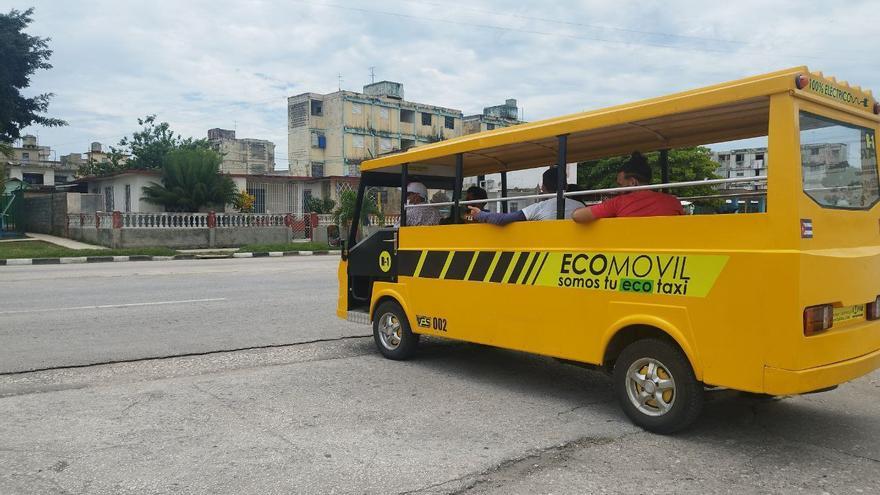
![]() 14ymedio, Mercedes García, Sancti Spiritus, 21 June 2023 — Almost three months of testing have not been enough for the electric minibus designed by the Armed Forces in Sancti Spíritus to stop being an experiment. The prototype of the vehicle, announced with great fanfare by the official press in April, is about to enter a rough terrain for its operation: the blackout season.
14ymedio, Mercedes García, Sancti Spiritus, 21 June 2023 — Almost three months of testing have not been enough for the electric minibus designed by the Armed Forces in Sancti Spíritus to stop being an experiment. The prototype of the vehicle, announced with great fanfare by the official press in April, is about to enter a rough terrain for its operation: the blackout season.
Those who manage to ride the eleven-seater minibus now wonder how the authorities will be able to propel the vehicle in the hottest months, with an overwhelming deficit of electricity and the multitude of passengers waiting to be picked up on the busiest route in the city: from El Chambelón to the hospitals, by way of the Central Highway.
The vehicle does not have solar panels but rather a generic charger — it incorporates energy very slowly — and a mess of cables whose design is a source of jokes for the locals. “They’re more expense than benefit,” one of the drivers complained aloud on Wednesday, while commenting on the sign that the garish yellow minibus has on its chassis: “100% electric.”
It is not known if the military will take the step to mass production. Technically, the bus continues to circulate in test mode, although it does so on a fairly well-paved and straight road. On the Central Highway – which divides Sancti Spíritus into two halves – there are also several key points for the population, such as the bus terminals, the hospital area and the space of the agricultural fair.
In April, when the local press praised the “clear coherence” of the army and its Military Industrial Company, it predicted that it would not be long before the yellow vehicles filled the streets of the province. It was, they said, a step to alleviate “the depressed state of public transport.”
They asked the authorities, of course, for “financial support” to maximize the potential of the “invention,” whose technical name is VES002. “The project is in the process of technical evaluation in order to know how it functions and the operating parameters that allow defects and problems to be corrected in advance,” said Escambray.
It was planned that, if everything went well, the military would start the production, taking advantage of the import of “five electrical supports,” starting points for the assembly. Once the “small fleet” was built, the Armed Forces planned to delegate the operation of the vehicles to an allied private enterprise. As of now, the business continues without much success.
Translated by Regina Anavy
____________
COLLABORATE WITH OUR WORK: The 14ymedio team is committed to practicing serious journalism that reflects Cuba’s reality in all its depth. Thank you for joining us on this long journey. We invite you to continue supporting us by becoming a member of 14ymedio now. Together we can continue transforming journalism in Cuba.
